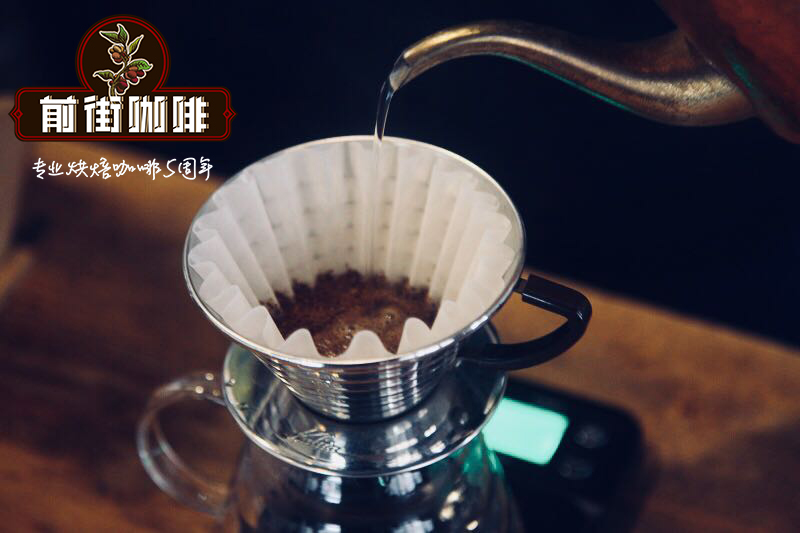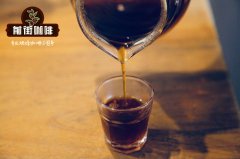What are the world-class coffee competitions? Interpretation of the rules of coffee competitions around the world

Professional coffee knowledge exchange more coffee bean information please follow the coffee workshop (Wechat official account cafe_style)
All kinds of coffee competitions _ WBC_coe Excellence Cup _ WLAC_WCTC_WCRC_WBrC
Just as the film industry has the Oscars, the music industry has the Grammy, the press has the Pulitzer Prize for journalism, and the design world has iF, the coffee industry has four major coffee world competitions led by the "World Coffee Olympics" WBC World Barista Competition-the World Peresta Competition (WBC), the World pull Art Competition (WLAC), the World Coffee Cup Test Competition (WCTC) and the World Coffee roasting Competition (WCRC). The arena of these competitions is the highest honor hall of baristas and the peak performance of coffee competition.
Coffee pull Competition Latte Art
One of the most common competitions is latte pull, which is Coffee Art or Latte Art in English. There are also some lattes in ordinary coffee shops, usually in the shape of love or leaves, but in the competition, they are pulled into different shapes through sculpture or barista skills. A good latte will make you feel more happy when drinking coffee, and it is not too much to say that it is an art. Use coffee as a canvas to paint on coffee!
World Latte Art Championship World Championship of drawing flowers
The World draw Championship is the most representative competition, which belongs to World Coffee Event. The whole process is like a performance, not only in the cup, but also in the cup. The preliminary competition includes a latte with a pattern created by the players in the bar area. And two consistent lattes and two consistent lattes on the competition stage, and this creative latte can also be carved and decorated, such as the pull of a rabbit in the picture above, and the person with high scores can win the championship through the evaluation. Among them, the score includes the arrangement of the environment, the flavor of the coffee itself, as well as the performance process and typhoon. Not only the pattern of coffee can win. After all, none of the representatives of the countries that arrived in the hall of the competition are fuel-saving lights, and the comprehensive score is more fair.
World Latte Art Championship World Coffee Art Competition is a professional coffee competition launched by the world coffee and event pioneer-WCE (World Coffee Events) based on the promotion of boutique coffee and based on boutique coffee. It is the second largest competition in the world and the highest level professional competition for the art of coffee jacquard. The World pull Art Competition is a competition that highlights artistic expression and challenges the barista's ability to perform live.
This competition requires that each contestant can only use milk and coffee as raw materials, Italian coffee machine and coffee cup as utensils to complete six drinks within 10 minutes: two identical Lafa macchiato. Two identical lattes and two cups of the same designer style (drinks based on milk and coffee, and can choose any tools and decorations to decorate the surface of the drink).
Coffee hand Competition Brew Coffee
The skills of hand flushing can be said to be very varied. Athletes from each country have different understandings, and each coffee bean and equipment have different cooking methods, and the competition is more interesting. Everyone has their own set of patterns of cooking and flow rate, and this is also an event in which Taiwanese often get ranked in the world.
World Brewers Cup World Coffee Brewing Competition
The World Coffee Brewing Competition is divided into two stages. The preliminary and final competitions specify two kinds of brewing and optional brewing, while in the finals, they mainly choose to brew, that is, they want to see the coffee flavor presented by each contestant through different brewing techniques under the same coffee beans, while the optional brewing is made by using their own coffee beans, and the competition usually uses top Rosa coffee. There are a lot of people who have burned hundreds of thousands of dollars in training in the competition, which is not so easy than this competition.
World Cup Tasters Championship (WCTC) World Cup Test Competition
The scoring part has wet aroma, flavor, aftertaste, acidity, mellow thickness, balance and overall impression, while the contestant performance part has flavor description and customer service, which is very much like a coffee service introduction show on the whole. In addition to paying attention to the flavor of coffee in hand, we should pay more attention to typhoon and expression. In the final in 2016, Japanese Tetsuya Satani won the championship. He originally suffered from diabetes because he loved drinking Coke in the electronics industry. After drinking coffee, he began to delve into coffee that is healthier. After learning from his master, he presented his hand-brewing skills. The third place was won by our Taiwanese Wang Tse, which also means that Taiwan's coffee skills are not to be underestimated in the world. What's interesting is that the second Nordic woman, Mikaela Wallgren, uses Kenyan water-washed beans instead of the often winning Geisha Rose Summer Coffee, and even this bean is the business bean of the Coffee Collection where he works.
Barista contest Barista
The most frequently touched coffee-espresso, Espresso defines a cup as 1 oz, and the preliminary competition requires an espresso and a cup of coffee with milk; the semi-finals and finals require a cup of espresso, a cup of milk coffee and a cup of creative coffee (coffee-based but non-alcoholic), which is a competition of both technology and creativity.
World Barista Championship World Barista Competition
The 2016 WBC was won by Taiwanese Wu Zelin. It is not easy to stand out in this competition called the Coffee Olympics. When brewing Italian coffee, due to high temperature and high pressure, the freshly brewed Espresso is actually quite hot, which is inevitable under high temperature and high pressure. This is also a problem that many baristas have to solve. If the judges feel that hot mouth or cup is too hot to get will affect the score. However, under Wu Zelin's research, it is found that cooling coffee handles can solve this problem, making the Espresso temperature in the throat of the judges more palatable and keeping more of the aroma of coffee. Under each way of brewing coffee, people are constantly delving into how to make coffee taste better and better under limited technology. The World Barista Competition is also a temple that baristas strive to look forward to every year. If you strive to become a barista, I wish you success.
An excellent international coffee competition hosted by the World Coffee Association (WCE) every year. The purpose of the competition is to introduce high-quality coffee and promote the professionalization of baristas. The World Coffee Association, registered by the European Professional Coffee Association and the American Special Coffee Association, is established in Dublin, Ireland.
The rule of the World Barista Competition is that each player is required to produce 4 espresso, 4 cappuccino and 4 creative coffee based on Italian concentrate within 15 minutes. The judges will judge the contestants from the use of equipment, the blending of coffee beans, the skills of making coffee, the taste and appearance of coffee products, and the creativity of creative coffee.
World Coffee in Good Spirits Championship (WCSC) Coffee blending World Championships
Organized by SCAE, the aim is to inspire baristas to improve their knowledge and skills and demonstrate the creative combination of coffee and spirits in the competition. From traditional Irish coffee to unique cocktails, the competition highlights baristas' skill in combining coffee with wine.
Each contestant is required to make two identical cups of hot Irish coffee based on whisky, syrup, coffee and cream, and two identical, cold or hot alcoholic coffee beverages within eight minutes. The latter has no restrictions on the raw materials used. This group of coffee drinks must be presented separately, but no priority is required.
World Siphonist Championship (WSC) World siphon Pot Competition
Sponsored by the Japanese boutique coffee association SCAJ, it expanded into a world-class competition in 2009. Contestant qualification: two years of experience in siphon cooking, which should be recommended by the association.
The content of the competition: three pots, two pots of hot coffee and two cups of creative coffee in the preliminary round. Five pots (4 individual cups, 4 creative coffees) will be brewed in the final.
Notice of rule adjustment and explanation of important adjustment contents of 2018WBC World Barista Competition
Important Notice :
前街咖啡 FrontStreet Coffee has moved to new addredd:
FrontStreet Coffee Address: 315,Donghua East Road,GuangZhou
Tel:020 38364473
- Prev

The strange rule of Italians drinking cappuccinos-do Italians really not drink cappuccinos?
Professional coffee knowledge exchange more coffee bean information Please pay attention to the coffee workshop (Wechat official account cafe_style) cappuccino _ cappuccino coffee _ cappuccino meaning not all Italians can stand the strength of Espresso, so many people replace Espresso with cappuccino for breakfast. But remember, cappuccino is breakfast in Italian eyes.
- Next

Coffee shop technology sharing | A tutorial on how to make ice drop coffee with a high success rate
Professional coffee knowledge exchange more coffee bean information please follow the coffee workshop (Wechat official account cafe_style) to make ice drop coffee it is recommended to choose a single bean, with a slow drip of 10 seconds and seven drops for about 6-8 hours, this way of low temperature extraction for a long time makes the coffee powder 100% moist, effectively remove bitterness and tannins, the coffee is clear amber, full-bodied, smooth and not taste
Related
- Beginners will see the "Coffee pull flower" guide!
- What is the difference between ice blog purified milk and ordinary milk coffee?
- Why is the Philippines the largest producer of crops in Liberia?
- For coffee extraction, should the fine powder be retained?
- How does extracted espresso fill pressed powder? How much strength does it take to press the powder?
- How to make jasmine cold extract coffee? Is the jasmine + latte good?
- Will this little toy really make the coffee taste better? How does Lily Drip affect coffee extraction?
- Will the action of slapping the filter cup also affect coffee extraction?
- What's the difference between powder-to-water ratio and powder-to-liquid ratio?
- What is the Ethiopian local species? What does it have to do with Heirloom native species?

